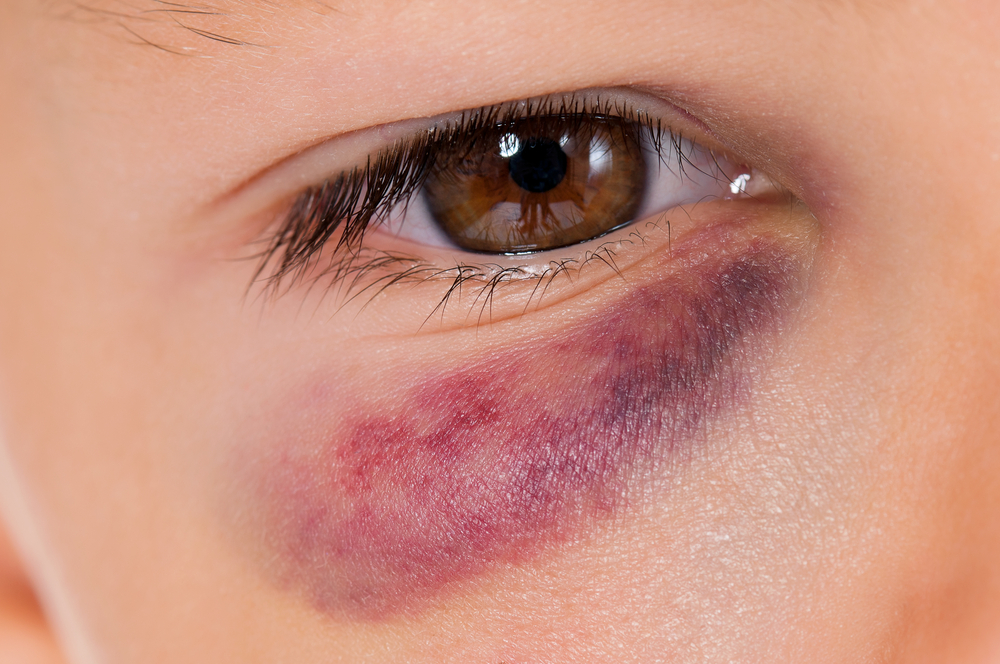How do you get a black eye?
I can only remember having a black eye once in my life, when I got hit with a rock right between the eyes. My brothers were throwing dirt clods at each other (real bright, eh?), and a clod went astray. You can get a black eye from a blow to the eye or to the nose, or, you can get a “shiner” if you have surgery to either area of your face. To protect your vision, you should know how to properly care for a black eye so you’ll be prepared for the next time it happens.
A black eye happens when a blow to the eye area (or sometimes surgery) causes the blood vessels around the eye to break. The vessels then bleed and the blood pools up in the tissue surrounding the eye. It’s the same concept of having dark circles and puffy eyes after not sleeping long enough. Except, of course, it’s much worse. The tissues also become inflamed and the skin turns a reddish to a bluish-purple to a black color. The shades vary depending on the severity of the trauma. A black eye is basically a bruise. When it begins to heal, a black eye will change colors again. The bruise will turn green, then yellow before the skin returns to its normal shade.

Properly Caring for a Black Eye
The first thing to do to properly care for a black eye is to inspect the area (if it was caused by a blow) around the eye for any cuts that may need professional medical attention. If the person who suffered the injury notices a change in their vision, experiences pain in that eye, if it hurts to look at a light, or if they feel nauseated or light-headed, they should seek medical attention right away. Usually a black eye is considered to be a minor injury, but that’s not always the case.
The next thing to do is to get something very cold to help reduce the swelling in the eye right away. You can use an ice pack wrapped in a wash cloth, a cold can of soda pop, a bag of frozen vegetables, or some ice cubes wrapped up in a washcloth. Never place an ice pack directly on your eye. Instead, to properly care for a black eye, hold the cold item at the top of the cheek. Or, hold it on the forehead above the affected eye.
The coldness cares for a black eye in three ways:
1) It helps reduce swelling
2) It helps reduce the blood vessels which lessens the amount of bleeding
3) It helps numb the area which reduces the pain.
Speaking of reducing the pain of a black eye, aspirin should never be administered because it’s a blood thinner. It can cause the vessels to bleed even more. Instead, Acetaminophen should be taken.
Note: An Old Wive's Tale About Black Eyes
The home remedy for a black eye was to place a raw steak directly on the eye. It was thought that the meat contained enzymes that would lessen the bruise. Furthermore, the coldness of the meat would help lessen the inflammation. The second belief is true, but the first is not. (You can still see people slapping a raw steak on a black eye if you watch old TV shows or movies.)
The first day, place the ice pack (or whatever you use) on the black eye for ten minutes every two hours. When the person with the shiner goes to bed that night, they should put another pillow or two on their bed. Propping themselves up will help keep the pooling of the blood to a minimum.
For the next two days, you’ll want to change the care to a clean, warm, moist washcloth on the affected eye. Do this for ten minutes every two hours.
The person with a black eye should continue to sleep elevated on extra pillows. They should avoid physical activities such as sports, that could cause further injury to the eye. Wearing dark glasses can help hide the shiner. It can also help protect the black eye.
In a week or two, the black eye should be completely healed.



